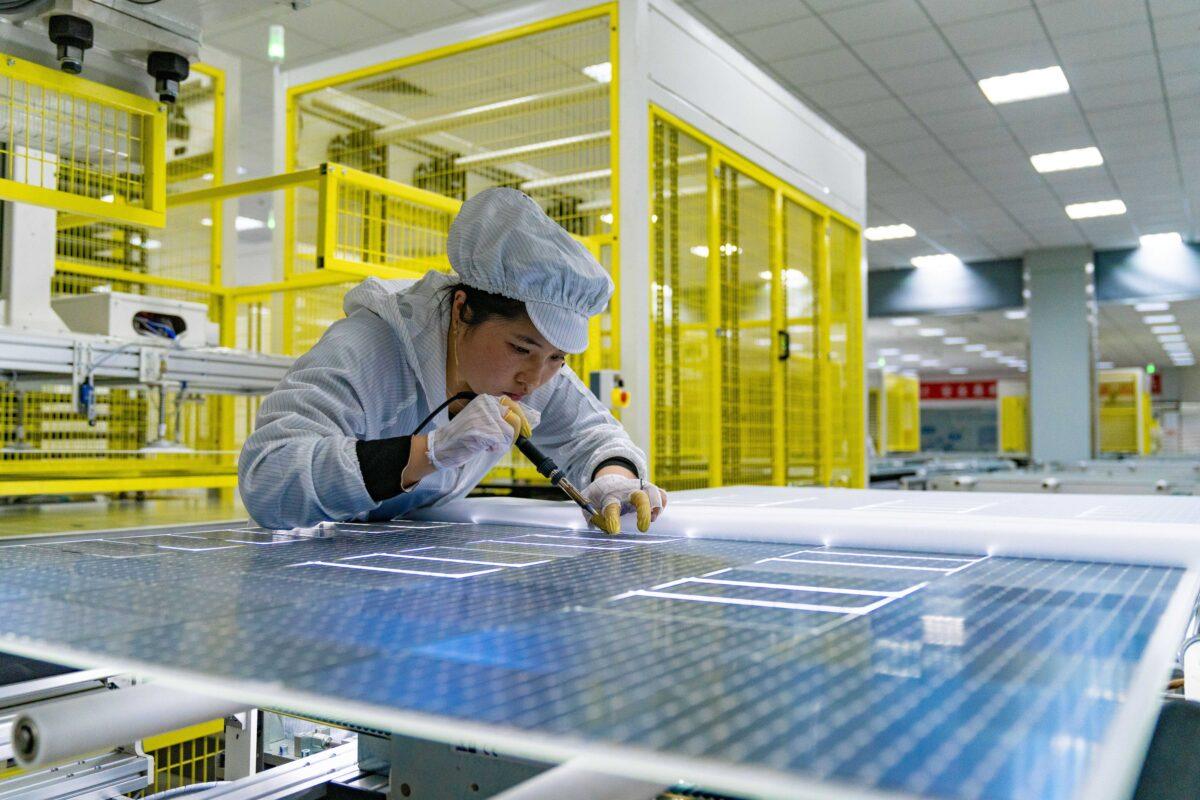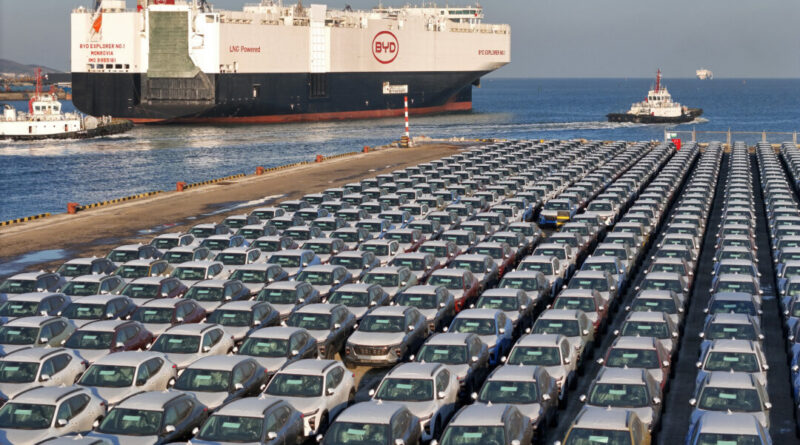Examining How China’s Party-State Capitalism Alters the Global Market Landscape
During Janet Yellen’s recent visit to China, she urged Chinese authorities to address their overcapacity problems to prevent global spillovers.
News Analysis
China’s weak domestic demand has prompted the country to ramp up exports of cheap goods, leading to a global glut of excess capacity worth trillions of dollars. This has led to significant global economic distortions and triggered a backlash from several countries, including the United States.
U.S. Treasury Secretary Janet Yellen concluded a four-day visit to China on April 9, during which she repeatedly urged Chinese authorities to address their overcapacity problems to prevent global spillovers.
Her primary goal during the trip was to persuade Chinese officials to curb overcapacity in clean energy technologies such as electric vehicles (EVs), solar panels, and lithium-ion batteries, which threaten competing companies in the United States and other countries.
Despite these discussions, Ms. Yellen acknowledged on April 8 that significant policy shifts from the Chinese authorities are unlikely in the near future. This ongoing issue remains a point of contention in U.S.-China economic relations, reflecting broader concerns about trade imbalances and market disruptions.
New Wave of Excess Capacity
A report released late last year by research firm Rhodium Group found that China’s auto industry has over 100 auto brands. With China’s post-pandemic economic recovery faltering, these brands had to look for markets overseas. The report states that China’s share of global EV exports has grown from 4 percent in 2020 to 21 percent in 2022.
In the solar panel industry, data from Ember, an independent energy think tank, shows that in the first half of 2023, China’s solar panel exports increased by about one-third year on year, reaching 114 gigawatts, equivalent to the total installed capacity of solar panels in the United States.
Europe is in a “price war” with China, said Gunter Erfurt, CEO of Swiss panel maker Meyer Burger.
In Europe, the price of solar modules fell by 50 percent within four weeks in the later days of 2023. Mr. Erfurt believes it was a sign that China was discounting at an “unprecedented speed” to grab market share.
‘China Shock 2.0’
This wave of overcapacity has been dubbed “China Shock 2.0”. The first “China Shock” took shape about two decades ago.
The United States granted China permanent normal trade relations (PNTR) status in 2000, ensuring that Chinese goods would face low tariffs when entering the U.S. market. In 2001, China officially joined the World Trade Organization. Over the next decade, imports from China into the United States accelerated.
In 2016, economists David H. Autor, David Dorn, and Gordon H. Hanson published the paper “The China Shock: Learning from Labor-Market Adjustment to Large Changes in Trade.” They found that between 1997 and 2011, increased imports from China caused the U.S. manufacturing sector to directly or indirectly lose about 2 million jobs, including 985,000 manufacturing jobs. The hardest hit sub-industries were those with low-skilled workers, such as apparel, textiles, footwear, and computer and electronic parts.
Party-State Capitalism
The Information Technology and Innovation Foundation (ITIF) points out that Chinese Communist Party (CCP) policymakers fundamentally reject the classic trade concept of “comparative advantage”—the principle that countries should specialize in producing the goods or services they are most efficient at and then trade for the rest. Instead, the CCP seeks “absolute advantage” across a range of industries, from high-speed rail and steel to semiconductors, vitamins, and solar panels.

In their book “Subsidies to Chinese Industry: State Capitalism, Business Strategy, and Trade Policy,” George T. Haley and Usha C.V. Haley wrote that the CCP’s strategy has long been to “aggressively subsidize targeted industries to dominate global markets.”
The book noted that in the 2000s, China provided nearly $100 billion in subsidies to three industries alone: $33 billion to the paper industry, $28 billion to auto parts, and $27 billion to the steel industry.
…





